The F&G system plays a vital role in increasing safety and preventing fire, explosions, and risks caused by releasing toxic gases in high-risk industries such as oil, gas, petrochemical, refinery, and similar industries. For this reason, designing the F&G system and solving the challenges related to it is of vital importance. Therefore, in this article from Ganjineh Pavan’s blog, we discuss the design of the F&G system for fire and gas monitoring and its challenges.
What is the Fire & Gas Detection System?
Fire and Gas Detection System or abbreviated F&G System is part of a combined system including components and circuits that are used to monitor, detect and announce the presence of fire, flame, smoke, and combustible and toxic gases to perform the appropriate response designed and adjusted.
In general, the F&G system is a safety management system for fire and gas detection. The F&G system is designed in such a way that it collects the detection signals of flame, smoke, combustible gas, and toxic gas in the desired industrial location. In the next step, the F&G system controls the fire alarm flashers, fire alarm, and automatic extinguishing system through the logical output of the software.

The importance of fire and gas detection systems in high-risk industries
Any factory or industrial project must be designed to be safe. Layers of protection must be identified and implemented to reduce risks to facilities and personnel. These protective layers secure the process and its personnel.
An F&G system is also a very extensive and effective SIS (Safety Instrumented System) that detects any danger in terms of fire or leakage of combustible and toxic gases, minimizes the risk, and prevents turning it into a fire or explosion, or other damages.
An F&G system continuously monitors all areas and provides the operator with information on detection/protection systems. The F&G system alerts personnel to any hazardous situation and, depending on the level of risk identified takes action to reduce the risk of stopping processes and releasing fire extinguishing agents.
F&G system design challenges
One of the main reasons that cause the inefficiency or failure of a flame and gas monitoring system is basically due to problems and weaknesses in the design of their F&G system. The main reasons for poor F&G system design include the following:
- Little knowledge of designers about F&G system design
- Lack of methodology in F&G system design
- Absence of performance measurement criteria of an F&G system in the design phase.
- F&G system design regardless of mitigation systems
- In the following, we will examine each of these challenges.
Little knowledge of designers about F&G system design
Lack of familiarity with how to determine, select, calibrate, and install detectors depending on the type of application can lead to low performance of the F&G flame and gas monitoring system, and cause the system not to warn of the presence of fire or gas or, on the contrary, by creating false alarms, disrupt the activity and impose losses.

Misdiagnosis and false alarms may occur due to the failure of detectors or due to not considering their installation conditions. Another important aspect of detection issues is low coverage. Because the number of detectors may be estimated to be less than the required value.
In the design phase of the F&G system, it is important to analyze the coverage of the detectors based on the detected gas or fire dispersion models.
Lack of methodology in F&G system design
Designers use many prescriptive standards for fire detection systems, such as NFPA 72 and EN54. These standards are widely used in real estate facilities. But they are of little use in factories and industrial projects.
Also, the International Automation Society (ISA) has developed standards for performance-based detectors, such as ISA 13.12.01 and ISA 92.0.01. These standards focus on the performance of detectors as a separate element, without regard to other elements in the F&G system.
Therefore, it is not enough to know and follow the existing standards to design an efficient F&G system. Rather, considering all the effective parameters, a specific methodology should be considered for the design. One of these important parameters is paying attention to the special criteria that the manufacturers of F&G gas and fire monitoring system equipment have considered in their design.

Considering the above challenges, in 2010 the International Automation Society (ISA) published a technical recommendation TR84.00.07. In which the basic guidelines for the methodological design of F&G systems in the fields of industrial processes are presented. Among the main points covered by this technical recommendation, two items can be highlighted:
- Provides an F&G lifecycle from design to decommissioning.
- F&G system design focuses on reducing plant or project risk to tolerable values.
Lack of performance measurement criteria for the F&G system at the design stage
Before TR84.00.07, there was no way to guarantee that the designs made for the F&G system were efficient and would perform well. Hence, there was no method to examine the performance of gas detectors and flame detectors and their interrelationship with hazard reduction.
In the same way, it tried to combine the concepts of security and functional availability based on common standards IEC 61508 and IEC 61511. However, when trying to interpret the concepts mentioned in these standards, designers have raised many questions because of the preventive nature of the functional safety standards and because of the mitigation principle that is included in the design of the F&G system.
Design of the monitoring system regardless of the mitigation systems
A mitigation system is a set of arrangements or equipment to reduce bad and destructive effects. Fire extinguishing systems such as sprinklers or types of gas fire extinguishing systems are installed to reduce the destructive effects of fire. Therefore, they are considered a reducing system.

Many design methodologies, including the ISA TR84.00.07 standard, are based on the three factors of coverage of detectors, accessibility of the monitoring system, and effectiveness of mitigation elements. However, too much emphasis is placed on the first two factors and the effectiveness of mitigation elements is not much considered.
Because of this, reducing elements do not work as expected. Because the selection of adequate techniques and necessary mitigation measures are not considered. Therefore, factors such as the reduction area, the type of fire, the insulation method to prevent the leakage of flammable gases or liquids, the reduction of the strength of the system related to the continuity of operations in the presence of fire or gases, to reduce the risk and destruction in the design of the F&G system should be considered.
The final word on F&G system design
In this article, from Ganjineh Pavan’s articles, we discussed F&G system design and its challenges. Solving the mentioned challenges can play an important role in increasing the efficiency of the monitoring system and reducing potential risks. F&G gas and fire monitoring system design is a highly specialized process and the use of experienced professionals in this field is a vital necessity.
Ganjineh Pavan company relies on the knowledge and experience of its experts in the successful implementation of large and medium projects in industries such as oil, gas, petrochemical, power plants, oil platforms, oil terminals, mines, laboratories, drilling, chemical centers, industrial factories; is ready to design and implement gas and fire detection system for high-risk industries and projects.
Ganjineh Pavan provides consulting, design, supply, installation and implementation, testing, and maintenance services in the following fields:
- Design and installation of fire alarm system
- Design and installation of fire extinguishing system
- Supply, design, and installation of the F&G system
- Safety equipment and personal protection
- Consulting and obtaining fire department approval for the completion of building work
Ganjineh Pavan is committed to designing and implementing the most efficient flame and gas monitoring system for employers’ workplaces by fully assessing the risk and environmental conditions and other effective factors.
References:


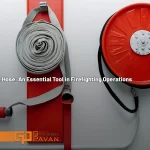
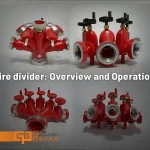
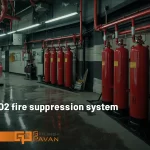
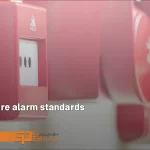
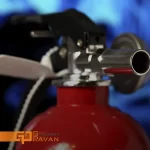


2 Responses
Thank you for sharing. A very informative post
Your support is appreciated